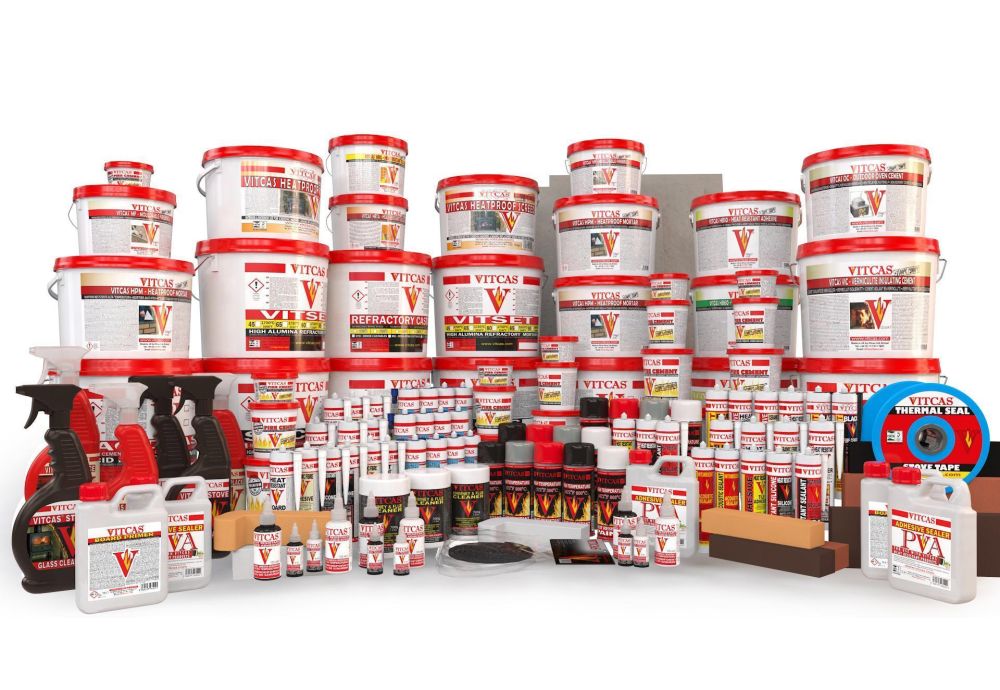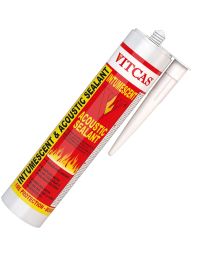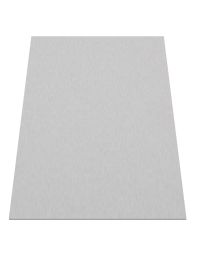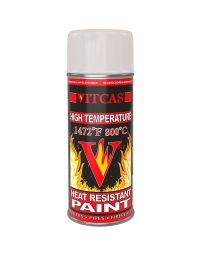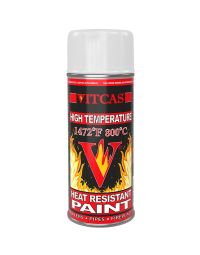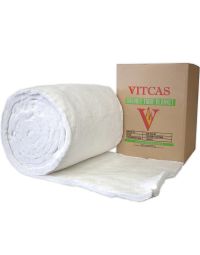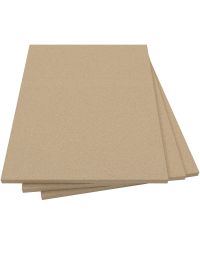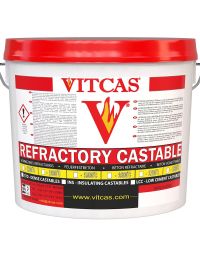There is a lot of misuse of the terms Fire Protection and Heat Resistant and their respective uses. These two terms can become very similar and confusing. The accompanying material will make clear the distinctions between the two.
Protection and resistant can never be used interchangeably, and both of these terms mean something different entirely. The confusion arises when you look at Resistant and Protection. Both words can be confusing, and you might get burnt if you're suggested to use one, but you purchase the other one.
Fire Protection:
The products designed for fire protection will be rated not to burn for some period of time while the occupants of the house escape the fire. These can only protect against the fire for some time, but the used material will eventually burn and meltdown against high temperatures. Items used in residential houses are usually made from fire protection materials.
Heat Resistant:
On the other hand, the heat resistant (refractory) products are designed to be working continuously at their maximum temperature. These products are designed to withstand extremely high temperatures and do not melt easily under high pressures. Items used in industrial environments and commercial sectors are usually heat resistant.
Let's take a look at their differences and see which ones are which. These will help us understand the core difference between the two, how to use them, when to use them, and which one is more suitable to our requirements. This can help save our lives, and help make better decisions.
What Are Fire Protection Products?
Fire protection and the relevant equipment are those fitted to fight against the spreading fire by slowing it down. Its basic purpose is to slow down the active fire, allow people to get out, and save as much environment as possible. Eventually, these products will give in, meltdown, and fade away in the fire. These components are triggered by intense heat or smoke, which acts to suppress a fire spread.
Fire defence includes paints, coating material, fabrics, and devices such as fire-alarms, and components such as smoke screens and dampers. Dampers are mounted inside a partition, and they resemble closely to an outlet. The damper can sense smoke, and function to avoid the smoke from streaming around the house.
The ultimate purpose of fire protection products is to ensure that the fire is kept within an area for as long as possible while allowing the residents to save their lives, save their belongings and other essentials. Once the fire is either over or controlled, these products would have melted and would need to be installed or mounted again.
Moreover, in spaces over three stories, these screens are fitted (and compulsory) instead of the traditional smoke detectors and vents. An accessible atrium with a smokescreen will profit the users in case of any fires.
The screen resembles a part of glass hanging from the top; this is often hardly perceptible. These parts avert a "chimney effect" in multi-level buildings with a cloud of smoke.
Again, for commercial places, there are several variants of fire protection products available. Depending on your requirements, environment, underlying material, and purpose, you can choose the product. Or, you can call in a specialist to help you choose the right one for your place.
Fire protection fabrics and paints and varnishes make it much harder to ignite different combustible materials. Not only that, but it also allows the self-extinguishing of small fires. Once these fire protection materials have done their job, the next stage of a heat prevention coating is to slow the rate at which the fire spreads, which is significant compared to surfaces that are not preserved with a fire retardant.
An estimated period of fire resistance to substrates, structural components, and objects is provided by fire protection products. International legislation varies per product and system, some requiring multiple testing requirements. If the fire protection environmental and structural systems and conditions of critical areas are not met, then a fire-resistance rating or fire certification may not be eligible.
Whether you're trying to confirm with your building's safety regulations (including using intumescent coatings on steel structures) or just want to guarantee that your home, café, bakery, hotel, guesthouse, warehouse or workplace has an extra layer of fire protection, it's important to make sure you've got a proper fire risk evaluation before moving forward with the installation of fire protection products.
Once this is finished, you'll know the kinds of steps you need to take and the right fire protection items to use, including building with fire bricks, adding fire extinguishers or other defensive fire escape devices, installing or updating doors to fire doors, selecting the correct intumescent paint to ensure you have fire retardant curtains, furniture, and fabrics within.
Let’s take a look at some of the best examples of fire protection materials and products.
HT-High Temperature Plasterboard
High Temp Plasterboard is a non-combustible fireproof and decorative board. This product does not contain any amount of gypsum. It can easily be used in areas where traditional and ordinary Fireplace Render is not applicable. It will offer a high level of protection against temperatures, and prevent the fire from spreading out of control. It has Non-flammable rating A1, as per EN 13501-1:2002. Moreover, this product is resistant to fire and water and resistant to mold and mildew.
Bio Soluble Fiber Blanket 1200ºC
This type of insulation blanket can easily withstand high temperatures of up to 1200ºC / 2192ºF. It is created from calcium and magnesium silicate fibers, and it doesn’t have any hazardous materials in it.
What Is Fire Protection Paint?
Fireproof exterior options include intumescent steel spray, wooden door upgrade kits to fireproof doors, etc. Fire protection paint is an amazing option to keep the exterior and the interior of your building safe from extensive fire damage and protect everyone in case of a fire.
When buildings have to be maintained in accordance with regulatory standards of the local area, such as rented houses, industrial kitchenettes, universities, hospices, etc., fireproof paints are recommended for fighting against intense temperatures and fire.
These fire protection paints are created to satisfy and offer varying fire protection levels. Fire retardant paints have different levels of protection contingent on the substratum that these components will be used for or used on, and the project's requirements and specifications. However, all fire protection paints offer some level of protection, which is long enough to allow everyone to evacuate without suffering too much loss.
These include fire resistance of thirty, sixty or ninety minutes, which means that if the surrounding components and elements have been properly treated, the coating and products will be able to take care of the underlying material for an additional thirty, sixty, ninety minutes. You can save yourself, your family and belongings in that kind of time, and repaint the entire wall once again without having to stretch your financial budget.
What Are Fire Protection Sprays?
Master painters and interior designers often use airless sprayers to make the paint fire retardant. However, you don't need to become a master to apply a paint spray-can to add fireproof paint to your home or place.
Spray fire protection dye has the additional benefit of much quicker coverage of large surfaces. If your goal is to enhance the fire resistance of a comparatively smaller region, it is often not necessary. However, if the surface area of your environment is quite large, and you want to cover it all quickly, go with an airless spray to make everything fire retardant.
Again, these sprays come with varying fire protection levels from 30 minutes to 120 minutes. You can choose your preferred air spray container, depending on your requirements.
Spraying the surface with fire-protective sprays is more than suitable for comparatively larger areas that require the highest rank of fire prevention coatings, such as industrial kitchens, hospitals, interior, and exterior warehouse surfaces, and is considered ideal for these types of projects. It's much easier and guarantees equal coverage of any coating that you choose.
What Are Fire Protection Varnishes?
If your ideal situation is to maintain your timber's lovely, gorgeous quality, then fire protection varnish might be the best solution for your queries. This option offers an equivalent level of fireproof timber paint standards but holds up a smooth and fine finish, established coatings, wood stains will be showing through. To be honest, you won't be able to say the varnish is fire-protective, so the emphasis on your surface aesthetics can stay.
What Are Heat Resistant Products?
Heat Resistant Products are those materials which can be used in a high-temperature process on a continuous and ongoing basis. Typically these materials will have a maximum temperature in use of at least 1000ºC and often considerably more. So not only can they be used in industrial processes such as the manufacture of ceramics, glass and metallurgy but they are also appropriate for use in domestic fireplaces and outdoor ovens.
It is important to understand that while these materials are designed to endure high temperatures in service they will not necessarily protect a combustible material which is near to them from burning.
Examples of Heat Resistant Products.
Vermiculite Board can be used inside a stove in contact with the fire as well as around fireplaces and stoves. It can be used in temperatures up to 1000ºC.
Fire bricks are used in industrial processes to line kilns and furnaces in addition to being a useful material to construct outdoor ovens and barbecues, open fireplaces and around domestic stoves. The maximum temperature is from 1400ºC upwards.
Refractory Castables are mainly used in industrial lining applications and can be thought of as a high temperature concrete mix. There are many different types starting from 1200ºC maximum temperature in service.
What Is the Difference Between Fire Protection and Heat Resistant Products?
The basic difference between fire protection products and heat resistant products is the applications, uses, and the variety of fire protection that they offer. While fire protection products can sustain and fight fire up to 30 to 120 minutes, they will eventually give in. These are designed only for one-time protection against fire so that you and everyone else can evacuate without suffering any major losses. Heat resistant articles and products, on the other hand, offer temperature resistance up to 1200ºC or even higher with the right treatment. These are made to withstand high temperatures without breaking down. These only pass the heat from one place to another and keep the fire inside the elements.
Fire protection products are most commonly used in hospitals, restaurants, colleges, schools, and other places where the crowd is in danger in case of a fire. Heat resistant elements, however, are used in the commercial and industrial places where fires have to be used at high temperatures. Both the product lines have their own uses. It depends on your preference and requirements to choose the best one for yourself.






